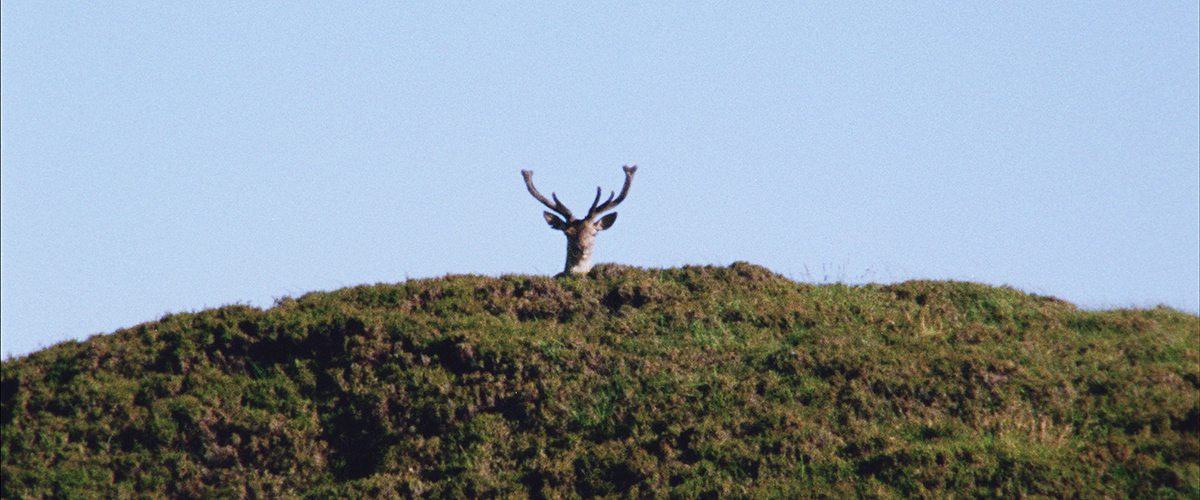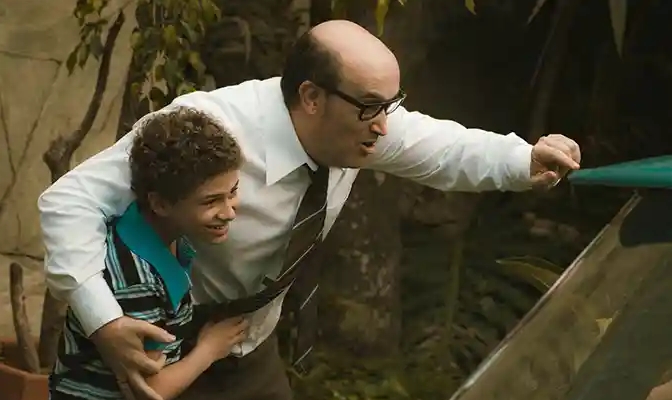Watch ‘Eami’ Review: Rotterdam-Winning Doc Is Choral Poem of a Film

Table of Contents
“Watch Online ‘Eami’ Review: Rotterdam-Winning Doc Is Choral Poem of a Film”
“‘Eami’ Review: Rotterdam-Winning Doc Is Choral Poem of a Film”
From its very first image, “Eami” demands you immerse yourself in its sensory imagination. With a still shot that runs slightly more than seven minutes, Encina urges us into rapt focus. A couple of eggs are nestled in pebbled sand, a body of water just a few feet away. Strong winds and billowing smoke scatter leaves in and out of the frame as the soundscapes around the eggs envelop us further. Winds, yes. And running water, too. But also animal growls and lilting birdsongs.
Encina wants us rooted firmly on this spot, even as the lighting and color grading keep modifying the tone and tenor of the shot. Gray greens give way to saturated yellows that in turn then dim away into darkness before an unnatural red-orange hue washes over this most unassuming of natural scenes. There’s comfort, then danger; nature at peace and then nature in threat. One image alone takes us on a complete journey.
As a microcosm of the film, this opening prologue for “Eami” immediately establishes how carefully Encina and DP Guillermo Saposnik are approaching the natural environment in Chaco. There’s a reverence here for the untainted world of the forest. Eventually, the cuts between eerily still shots of rippling waters or windswept trees will emerge as driven by a desire to capture the immanence of the natural world, to relish in its beauty and to remain awestruck by its resilience. Still, the audiovisual tapestry Encina, Saposnik and editor Jordana Berg weave throughout would be nothing without, on the one hand, the natural soundscapes that surround us every step of the way and, on the other, the many voiceover narratives that layer over them a rich, choral history.
Overlaid on those eggs, for instance, is the history of Ayoreo. The voice is that of “Asojá,” who regales us with the cosmology that first begat the Ayoreo people: how wind gave way to breath which gave way to song. It’s from that song that inhabitants of nature first came to be. Asojá, who was a bird yet who describes herself as having the shape of a woman, emerged then as well and begat the world. It is she who will be our guide and who traces, in those first minutes (as sounds of trucks and later fires and embers) the way the Ayoreo were run out of their home by the “coñone” who came in to take their land. Her voice will later be tied to the young titular character, a young girl who’s been hurt and, in an induced healing slumber, finds herself keying into all sorts of stories from her family’s past that become the soundtrack for the entirety of the film.
In keeping with such a description, “Eami” is a hazy daydream of a film. Even as it ostensibly tells the story of its protagonist as she flees from the land she’s always known, aware that many others have not been as lucky (we witness several of them captured by unnamed men with rifles who keep them captive, mistreat them and give them clothes to cover their nakedness), Encina’s project is a study in memory. Its final credits note a handful of “Testimonials” as part of its cast. These are people whom the Paraguayan filmmaker interviewed for the project and whose voices make up the bulk of the driving force of the film. Their stories, equally as grounded in horrific displacement that’s led to the destruction of their ancestral lands as well as lifted up into myth and folklore where the wind and even a lizard are spoken of as characters, have a hypnotic effect. They speak to a way of being in and with the world that’s been violently eroded by the “coñones” who continue to drive out the likes of Eami.
“Shall we all have to heal eternally?” one of the voices asks. “Do wounds ever heal?” The questions, like much of what Encina puts on screen, are meant to linger, rhetorical as they may be. Even as her characters more often than not elude her own gaze (except for some key close-ups where an eyes-closed expression soon blooms into a visual and thematic leitmotif), Encina manages to capture their spirit. One, perhaps, which may not wish to be embalmed in known cinematic genres. And so it’s fitting she’s created a film that plays with rhythms and sensibilities, equal parts nature doc and choral poem, an experimental memory essay that’s also an urgent elegy for a people, a forest, a world.
If you liked the article, do not forget to share it with your friends. Follow us on Google News too, click on the star and choose us from your favorites.
For forums sites go to Forum.BuradaBiliyorum.Com
If you want to read more Like this articles, you can visit our Watch Movies & TV Series category




